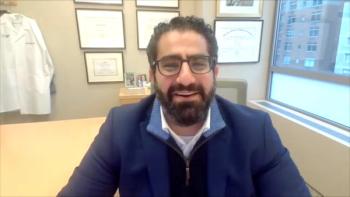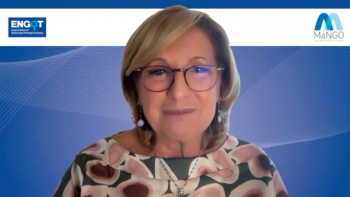
Supplements and Featured Publications
- The Patient Assistance Safety Net: How Many Need Help? How Many Are Helped?
- Volume 24
- Issue 5 Suppl
Impact of Trained Oncology Financial Navigators on Patient Out-of-Pocket Spending
Hospitals that used trained financial navigators were able to provide financial assistance for their patients with cancer, providing access to care that would otherwise be unaffordable.
ABSTRACT
Objectives: Patients with cancer often face financial hardships, including loss of productivity, high out-of-pocket (OOP) costs, depletion of savings, and bankruptcy. By providing financial guidance and assistance through specially trained navigators, hospitals and cancer care clinics may be able mitigate the financial burdens to patients and also minimize financial losses for the treating institutions.
Study Design: Financial navigators at 4 hospitals were trained through The NaVectis Group, an organization that provides training to healthcare staff to increase patient access to care and assist with OOP expenses. Data regarding financial assistance and hospital revenue were collected after instituting these programs.
Methods: Amount and type of assistance (free medication, new insurance enrollment, premium/co-pay assistance) were determined annually for all qualifying patients at the participating hospitals.
Results: Of 11,186 new patients with cancer seen across the 4 participating hospitals between 2012 and 2016, 3572 (32%) qualified for financial assistance. They obtained $39 million in total financial assistance, averaging $3.5 million per year in the 11 years under observation. Patients saved an average of $33,265 annually on medication, $12,256 through enrollment in insurance plans, $35,294 with premium assistance, and $3076 with co-pay assistance. The 4 hospitals were able to avoid write-offs and save on charity care by an average of $2.1 million per year.
Conclusions: Providing financial navigation training to staff at hospitals and cancer centers can significantly benefit patients through decreased OOP expenditures and also mitigate financial losses for healthcare institutions.
Am J Manag Care. 2018;24(5 Suppl):S74-S79Takeaway Points
The use of trained oncology financial navigators can increase access to care and save money for both patients and hospitals.
- In the 4 hospitals studied, patients saved a total of $39 million over 11 years.
- Patients, on average, received $33,265 in free medications per year and saved $12,256 through enrollment in insurance plans, $35,294 with premium assistance, and $3076 with co-pay assistance each year.
- Hospitals saved $2.1 million annually on care that would have previously been provided as charity care or gone to bad debt.
After a cancer diagnosis, patients and families face many stressors, including the possibility of significant short-term and long-term financial consequences. Rising premiums, deductibles, coinsurance, and co-payments for oral oncology drugs, many of which cost over $10,000 per month, expose patients and families to significant out-of-pocket (OOP) healthcare spending. These direct medical costs, in combination with the indirect costs related to patients’ and families’ decreased work hours or loss of employment, create a perfect storm for financial devastation. Indeed, up to 75% of patients with cancer report experiencing high levels of anxiety or distress related to the financial aspects of treatment. Many patients, particularly younger, nonwhite, and lower-income individuals, experience significant financial setbacks, including accrual of debt and loans, loss of savings and assets, and personal bankruptcy, as a result of healthcare costs.1-5 Recent studies have shown that patients with cancer who experience financial hardship have a higher risk of treatment nonadherence, poorer quality of life, and higher mortality than those who do not experience such hardship.6-8 Efforts to mitigate the financial burden of cancer treatment are therefore desperately needed.
Many have argued that a critical step in addressing the financial side effects of cancer care is improving communication about costs between patients and oncologists.9 However, most oncologists fall short in providing adequate guidance to patients and families about financial issues. In fact, although a majority of oncologists feel that it is important to discuss how treatment may affect financial well-being, nearly one-third feel uncomfortable doing so and one-fifth do not think that cost should ever be considered when making treatment decisions.10 Improving cost communication between patients and oncologists is therefore not sufficient in order to truly address patients’ and families’ financial issues; clinics must either collaborate with outside organizations that have expertise in financial counseling and medical costs or invest in internal financial navigation resources to provide consistent and proactive financial support to all patients beginning at diagnosis.11 The latter model is appealing in that in-house navigators can work with other members of the team and access clinical information easily and quickly. Few such models for providing financial navigation within the clinical setting have been described. In practice, the work of financial navigation frequently falls on poorly trained staff who do not have the required education or credentials to be able to offer true expertise in dealing with the complexities of the insurance marketplace and treatment-related costs.11 Therefore, a high need exists to establish and evaluate the benefits associated with different types of oncology financial navigation models.
The NaVectis Group is a company that provides education and training to healthcare staff on how to improve patient access to financial assistance. Key components of the program include training staff who have higher levels of education, implementing systematic processes for identifying patients in need, obtaining or improving insurance coverage for patients, and using tracking software to quantify benefits. Here, we show that by instituting a financial navigation program using trained counselors, hospitals can save money that would typically have gone to bad debt, and patients can gain access to care that would otherwise have been unaffordable.
METHODS
Patient Population
Four hospitals in the United States participated in this study and received training by The NaVectis Group to implement a financial navigation program. Three hospitals trained current employees, and the fourth hospital hired a new employee for the position. All patients with cancer seen at the hospitals were eligible to be seen by these NaVectis-trained financial navigators.
Data Collection
After training of staff by The NaVectis Group and implementation of the financial navigator program, de-identified information regarding the number of patients seen, number receiving assistance, types of assistance, and amounts of assistance were tracked annually. Each hospital instituted the program at different times, with Hospital #1 having 1 year of operation (2016), Hospital #2 having 3 years (2014-2016), Hospital #3 having 2 years (2015-2016), and Hospital #4 having 5 years (2012-2016). Only new patients seen in a given year were included in that year’s data.
Calculation of Cost Savings to Patients and/or Hospitals: Categories of Cost Savings and Assumptions
Free medication. In cases where free medication was provided directly to patients or to hospitals on patients’ behalf, we calculated patient cost savings as the amount that would have been charged to the patient by the hospital or pharmacy. Hospitals were either supplied with free medication on behalf of individual patients or were reimbursed for the cost of previously dispensed medication. In both cases, the benefit to the hospital was considered to be the acquisition cost of the medication.
Co-pay assistance. Cost savings from co-pay assistance were calculated as the total amount paid to hospitals to offset co-pays for medications and other services by patient assistance foundations or pharmaceutical industry programs.
Premium assistance. When hospitals paid insurance premiums for a patient, the benefit to the hospital was calculated as the amount of insurance reimbursement for the patient’s care minus the amount the hospital paid for the premium. As hospitals’ insurance payments for patient care are typically less than the initial charge, patient savings were calculated as the cost of the premium payments in addition to 150% of the insurance payments to the hospital, with a likely range between 100% and 200%.
Insurance enrollment. Financial navigators educated patients on insurance options and referred them to insurance brokers to help them enroll in insurance plans, including Medicaid, Medicare Part D, Medicare Supplement, Medicare Advantage, and Affordable Care Act (ACA) Marketplace plans. Based on prior data collected by The NaVectis Group, the patient benefit of enrollment in Medicare Supplement or Medicare Advantage was estimated to be $5000 annually, with hospitals receiving increased payments of $4000 and $2500, respectively. When hospitals helped a patient to enroll in a Medicaid or Marketplace plan, the benefit to the hospital was recorded as the value of the insurance payments to the hospital. The benefit to patients was estimated at 150% of the hospitals’ payments, assuming that direct-to-patient bills would be higher than the insurance negotiated rate, with a likely range between 100% and 200%. For Medicare Part D, the benefit to patients was recorded as the value of initial coverage under the Part D plan.
Marketplace maximization. Financial navigators helped patients in ACA Marketplace plans to obtain the highest level of coverage with the lowest OOP costs. Hospital #3 reported the actual cost savings to the patient and hospital, but for Hospitals #1 and #2, it was estimated that patients saved $2500 in OOP expenses from restructuring of their health plans and hospitals then received that same amount in insurance payments. Hospital #4 did not assist patients with Marketplace maximization.
Community assistance. Patients frequently received assistance for other costs, such as transportation and medical equipment. This was reported as the actual amount that the patient received, with no benefit to the hospital.
RESULTS
A total of 11,186 new patients with cancer were seen across the 4 hospitals after financial navigation programs were instituted (Table 1). Hospital #1 was able to obtain financial assistance for 87% of new patients seen in the first year of the program, whereas other hospitals helped between 15% and 39% of new patients each year. There were differences in the number of patients helped in each assistance category (eg, free medication, premium assistance) among hospitals. For instance, Hospital #1 provided free medication to 15% of new patients in 2016, whereas fewer than 1% of patients at Hospital #4 received this benefit. All hospitals helped patients to enroll in insurance plans, with hospital #4 seeing a large increase, from 27 patients enrolled in 2013 to 174 in 2017, after they began helping patients to enroll in health insurance exchanges mandated by the ACA. Hospital #4 did not report data on community assistance or Marketplace maximization, in which financial navigators helped patients change to more appropriate coverage using healthcare exchanges.
Financial navigators saved patients a total of $39 million (range, $31-$47 million varying on the estimated cost savings) in the 11 total years of follow-up in the 4 hospitals. These savings consisted of help covering OOP costs, such as medications, co-pays, and insurance premiums, as well as helping patients obtain insurance and receive medical care that they otherwise would not have been able to afford (Table 2).
Medication costs were often covered by foundational support or drug companies, which allowed patients to save an average of $33,265 per year. Similarly, financial navigators helped patients access co-pay assistance programs, which primarily helped with co-pays for medications but also other types of care, totaling $2.5 million in assistance. All hospitals instituted programs in which they paid insurance premiums for patients who were unable to do so; this allowed patients to maintain insurance coverage that paid for their cancer care. This service provided $35,294 (estimated range, $23,529-$47,058) per year in care to patients. Financial navigators assisted patients in enrolling in insurance plans, such as Medicare Supplement, Medicare Advantage, Medicaid, and ACA Marketplace plans. As shown in Table 2, patients received medical care with an estimated total cost of $11,214,225 (range, $7,948,370-$14,480,079) or $12,256 (estimated range, $8687-$15,825) per patient annually as a result of gaining insurance coverage. Another service offered was helping patients to change medical plans and coverage through the ACA Marketplace plans in order to maximize coverage and minimize costs. Aside from direct costs of medical care, patients were frequently provided with community assistance to help with expenses like transportation, accounting for nearly $900 in aid per patient. As patient savings were only reported within the first calendar year after establishing care, it is probable that the total benefit to patients was much greater than these amounts, as many patients were likely seen for several years.
Hospitals also benefited significantly from the financial navigation services provided to patients. This increase in revenue largely consisted of payments from insurance companies or patient assistance programs to cover costs that otherwise would have been provided as charity care or written off as bad debt. With medications, hospitals benefited either by having free medications provided specifically for the patients or by having medication replaced after its use, worth a total of $3 million across all hospitals (Table 3). Although the hospitals had to pay several thousand dollars to help each patient with insurance premium payments, the resultant insurance payments more than made up for the initial spending, averaging $1 million per year per hospital in increased revenue. Hospitals also received payments for medications and services through patient co-pay assistance programs, which were reported as the actual amount paid to the hospital. As with the benefit to patients, the benefit to hospitals from enrolling patients in insurance plans was the actual amount of insurance payments for some plans but an estimate for others, such as Medicare Supplement and Medicare Advantage. This amount varied greatly among hospitals, largely due to the types of insurance and number of patients helped, with hospitals claiming increased revenue between $43,500 and $2,823,704 per year. For instance, once Hospital #4 began enrolling patients in ACA Marketplace plans in 2014, the amount that it received in insurance payments for patient care increased dramatically from $88,000 in 2012 to $2.8 million in 2016. Hospital #2 was able to increase revenue after enrolling patients in Part D as it had a hospital-owned retail pharmacy where oral oncolytic prescriptions were filled, whereas patients at all other hospitals used independent mail-order pharmacies. In total, the hospitals were able to increase revenue or avoid bad debt by an estimated total of $23 million during the 11 years of follow-up.
DISCUSSION
By instituting financial navigation programs for patients, hospitals were able to provide cancer care that previously would have been unaffordable to many patients. OOP expenses for medications can be a large financial burden for patients, and financial counselors were able to assist patients by procuring free medication and helping to cover the high co-pays that insurance companies often charge for expensive cancer medications. Although all Americans were at the time mandated by the ACA to have health insurance coverage, many remained uninsured or underinsured. Financial navigators were successful in enrolling patients in many types of insurance plans, including Medicare Supplement, Medicare Advantage, Medicaid, and ACA Marketplace plans. Although this study did not specifically look at the financial toxicity that these patients faced, we expect that the financial navigation services helped to decrease some of the economic stresses associated with their care. As financial toxicity is associated with noncompliance and poorer outcomes, these patient navigation services would have the ultimate effect of improving outcomes for patients with cancer.
Hospitals that treat patients with cancer, particularly those with large underserved populations, can face millions of dollars in losses by providing care for which they will not be reimbursed. The services provided by trained financial navigators can help to mitigate these losses through the same programs that help the patients by increasing the number of insured patients, paying insurance premiums to help keep patients insured, finding programs to help patients with OOP costs that would not be otherwise be paid, and obtaining free medications from patient assistance programs.
Limitations
Although the benefits to patients and hospitals are obvious, this study did have several limitations. First, the only hospitals included in this analysis were those that had already begun utilizing trained financial navigators. We did not have data on the number of patients who received financial assistance, types of assistance, or amount of assistance at the same 4 hospitals before instituting the structured programs. If a hospital already had a systemic, structured method to identify patients who would benefit from financial counseling and could provide those patients with similar types of assistance, the addition of trained navigators may not result in a significant increase in benefit to patients and hospitals. Additionally, there was no comparison with similar hospitals that did not use trained financial navigators over the same time period.
Our ability to accurately quantify the savings and benefits to patients and hospitals was limited by several factors. First, only “new” patients were included in the data for each year; therefore, even if a patient received care, and financial assistance, over multiple years, the only benefits recorded were those obtained by December 31 of the year in which they were first seen. This, however, would probably serve to underestimate the amount of assistance given to patients. Second, not all benefits were exact dollar amounts, particularly the benefit for enrolling patients in various insurance plans. Enrollment in Medicare Supplement and Advantage plans were estimated to provide $5000 in care to patients, but in actuality, the number was probably much higher given the high cost of cancer care in the United States. Again, this likely underestimated the total benefit to patients and hospitals. Lastly, many of the estimates of benefit to patients were also based on an assumption that the OOP costs to uninsured patients would be much greater than the actual amount reimbursed to hospitals by insurance providers, but this estimate was required because only the reimbursement received by the hospital was recorded.
CONCLUSIONS
Hospitals that used trained financial navigators were able to provide significant financial assistance for their patients with cancer and hopefully alleviate some of the financial distress felt by many patients that can lead to adverse outcomes.Author Affiliations: Clinical Research Division (TY, JS, KW, VS), and Division of Public Health Sciences (VS), Fred Hutchinson Cancer Research Center, Seattle, WA; Division of Medical Oncology, University of Washington School of Medicine (TY, VS), Seattle, WA; The NaVectis Group (DS), Caledonia, MI.
Source of Funding: None.
Author Disclosures: Mr Sherman is owner and president of The NaVectis Group. The remaining authors report no relationship or financial interest with any entity that would pose a conflict of interest with the subject matter of this article.
Authorship Information: Concept and design (JS, KW, DS, VS); acquisition of data (TY, JS, DS, VS); analysis and interpretation of data (TY, JS, VS); drafting of the manuscript (TY, JS, VS); critical revision of the manuscript for important intellectual content (TY, VS); statistical analysis (TY); administrative, technical, or logistic support (JS, KW); and supervision (KW, DS).
Address Correspondence to: Todd Yezefski, MD, Fred Hutchinson Cancer Research Center, 1100 Fairview Ave N, D5-100, Seattle, WA 98109-1024. Email: tyezefsk@fredhutch.org.REFERENCES
1. American Society of Clinical Oncology. The state of cancer care in America, 2014: a report by the American Society of Clinical Oncology. J Oncol Pract. 2014;10(2):119-142. doi: 10.1200/JOP.2014.001386.
2. Ramsey S, Blough D, Kirchhoff A, et al. Washington state cancer patients found to be at greater risk for bankruptcy than people without a cancer diagnosis. Health Aff (Millwood). 2013;32(6):1143-1152. doi: 10.1377/hlthaff.2012.1263.
3. Yabroff KR, Dowling EC, Guy GP Jr, et al. Financial hardship associated with cancer in the United States: findings from a population-based sample of adult cancer survivors. J Clin Oncol. 2016;34(3):259-267. doi: 10.1200/JCO.2015.62.0468.
4. Banegas MP, Guy GP Jr, de Moor JS, et al. For working-age cancer survivors, medical debt and bankruptcy create financial hardships. Health Aff (Millwood). 2016;35(1):54-61. doi: 10.1377/hlthaff.2015.0830.
5. Gordon LG, Merollini KMD, Lowe A, Chan RJ. A systematic review of financial toxicity among cancer survivors: we can’t pay the co-pay. Patient. 2017;10(3):295-309. doi: 10.1007/s40271-016-0204-x.
6. Dusetzina SB, Winn AN, Abel GA, Huskamp HA, Keating NL. Cost sharing and adherence to tyrosine kinase inhibitors for patients with chronic myeloid leukemia. J Clin Oncol. 2014;32(4):306-311. doi: 10.1200/JCO.2013.52.9123.
7. Narang AK, Nicholas LH. Out-of-pocket spending and financial burden among Medicare beneficiaries with cancer. JAMA Oncol. 2017;3(6):757-765. doi: 10.1001/jamaoncol.2016.4865.
8. Ramsey SD, Bansal A, Fedorenko CR, et al. Financial insolvency as a risk factor for early mortality among patients with cancer. J Clin Oncol. 2016;34(9):980-986. doi: 10.1200/JCO.2015.64.6620.
9. Meropol NJ, Schrag D, Smith TJ, et al; American Society of Clinical Oncology. American Society of Clinical Oncology guidance statement: the cost of cancer care. J Clin Oncol. 2009;27(23):3868-3874. doi: 10.1200/JCO.2009.23.1183.
10. Schrag D, Hanger M. Medical oncologists’ views on communicating with patients about chemotherapy costs: a pilot survey. J Clin Oncol. 2007;25(2):233-237. doi: 10.1200/JCO.2006.09.2437.
11. Sherman DE. Transforming practices through the Oncology Care Model: financial toxicity and counseling. J Oncol Pract. 2017;13(8):519-522. doi: 10.1200/JOP.2017.023655.
Articles in this issue
Newsletter
Stay ahead of policy, cost, and value—subscribe to AJMC for expert insights at the intersection of clinical care and health economics.
















































